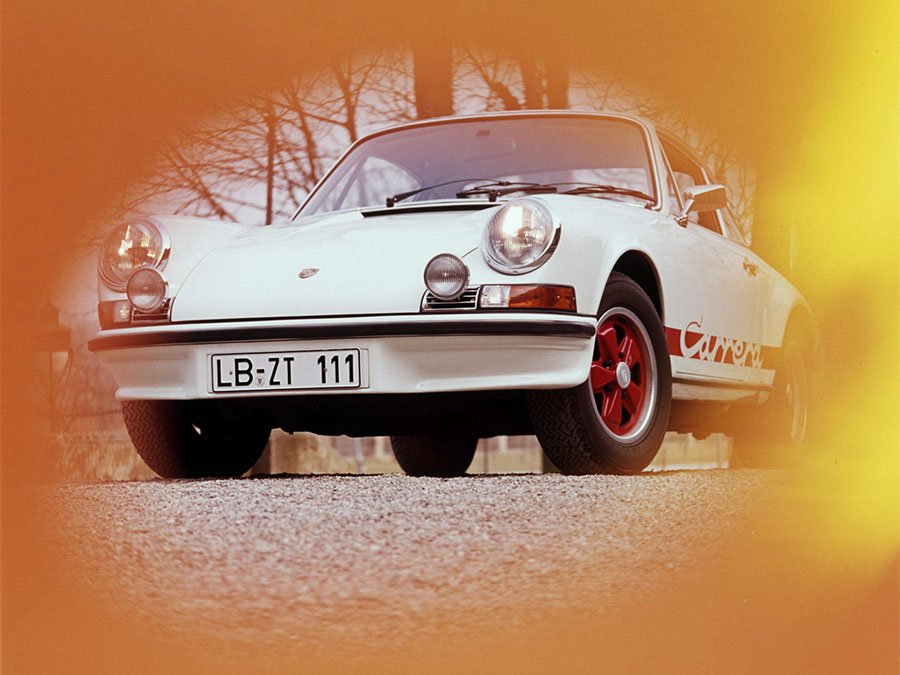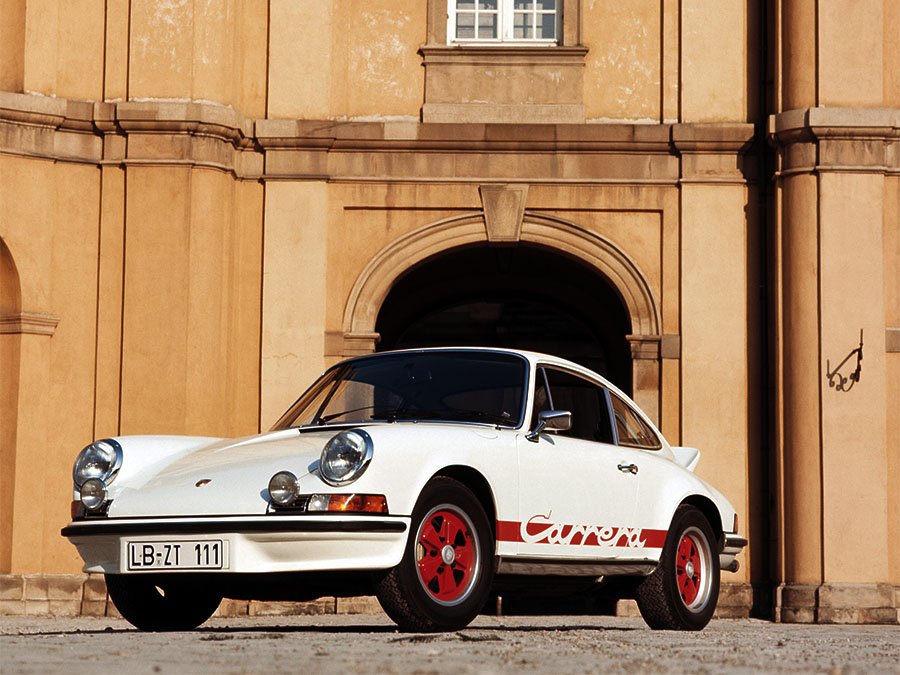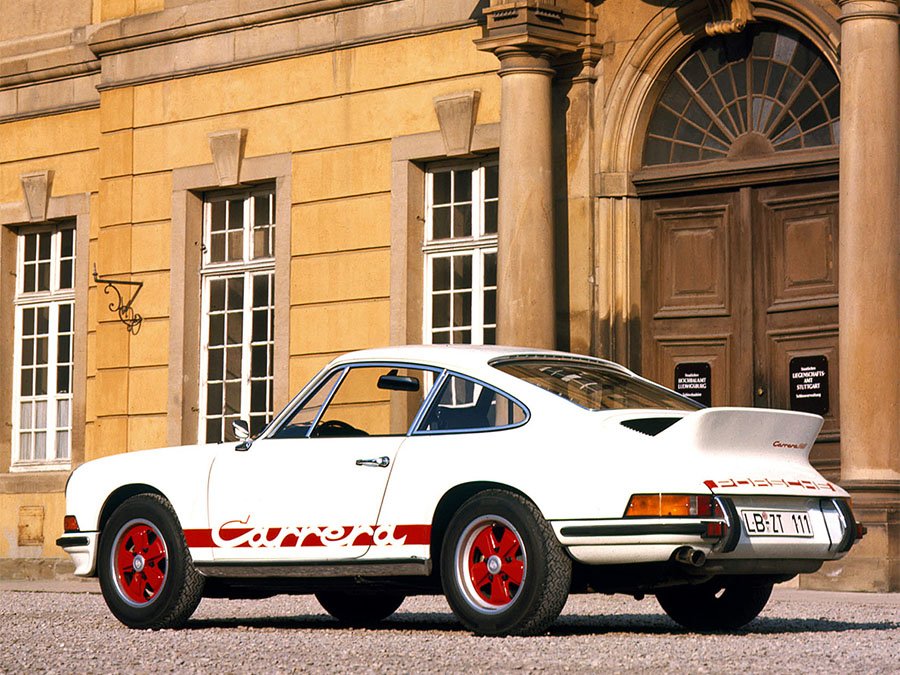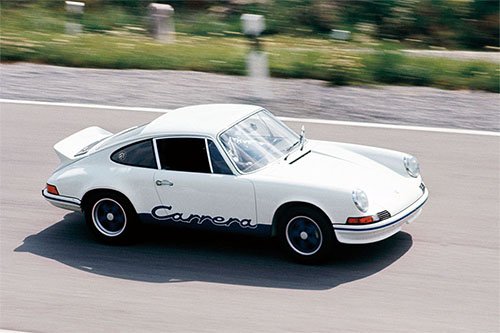FAQ: Porsche 911 2.7 Carrera RS
/


What is a Porsche 911 2.7 Carrera RS?
The 911 2.7 Carrera RS was a homologation special built to pave the way for an enhanced RSR racing version ahead of the 1973 season. It featured an enlarged engine (the biggest yet seen in a production 911) plus an array of chassis, suspension, body and interior upgrades to make it as light and fast as possible.
When was the Porsche 911 2.7 Carrera RS launched?
The 911 2.7 Carrera RS was launched at the Paris Motor Show in October 1972.
How many examples of the Porsche 911 2.7 Carrera RS were built?
Porsche initially only planned to build 500 examples of the 911 2.7 Carrera RS (the minimum number required for homologation). However, the model proved so popular that 1525 were eventually completed by the time production was discontinued in July 1973.
What method of construction did the Porsche 911 2.7 Carrera RS use?
Like all 911s of this era, the 2.7 Carrera RS was based around a unitary steel bodyshell.
What engine did the Porsche 911 2.7 Carrera RS use?
The 911 2.7 Carrera RS used a model-specific Type 911/83 motor which was a 2.7-litre dry-sumped, air-cooled, all-alloy Flat 6 with single overhead camshafts per bank and mechanical Bosch fuel-injection. Peak output was 210bhp at 6300rpm and 188lb-ft at 5100rpm.
What gearbox did the Porsche 911 2.7 Carrera RS use?
The 911 2.7 Carrera RS used Porsche’s five-speed manual Type 915 gearbox uniquely equipped with longer ratios on fourth and fifth and a heavier clutch spring.
How many different versions of the Porsche 911 2.7 Carrera RS were built?
Porsche built three different versions of the 911 2.7 Carrera RS.
The first 17 cars were RS H variants created to certify the model at the lightest weight possible for homologation (960kg).
The remaining cars were completed to either 975kg Sport specification (option code M471, 200 examples built) or 1075kg Touring specification (option code M472, 1308 examples built).
The M471 Sport was a lightweight version whereas the M472 Touring came equipped with a Comfort pack and several heavier parts.
What is the most sought after specification for a Porsche 911 2.7 Carrera RS?
Cars built to the rare M471 Sport specification tend to retail at a substantial premium over M472 Touring variants. The rarely seen RS H is the most valuable of all.
What are the most sought after colours for a Porsche 911 2.7 Carrera RS?
Pastel shades are generally the most sought after colours for a 911 2.7 Carrera RS followed by bright yellows, greens, purples and blues then darker shades, metallics, whites and reds.
What are the most sought after optional extras for a Porsche 911 2.7 Carrera RS?
The most sought after factory-fitted option for a 911 2.7 Carrera RS is a limited-slip differential. Spot lights are also quite desirable.
Items that increase comfort or practicality but add weight and detract from the car’s performance (such as a sunroof, rear wiper and radio) make a car worth slightly less than an otherwise identical machine in standard trim.
A competition history can also add a substantial premium to a car’s value depending upon the calibre of events contested.
Is a Porsche 911 2.7 Carrera RS reliable?
Porsche 911s, even cars built to this extreme Carrera RS specification, are legendary for their mechanical robustness if properly looked after.
Are parts expensive for a Porsche 911 2.7 Carrera RS?
Certain parts can be expensive, but generally the 911 2.7 Carrera RS is one of the cheapest cars to run in its price bracket.
Does Porsche still supply parts for the 911 2.7 Carrera RS?
Yes. Porsche still supplies many parts for the 911 2.7 Carrera RS.
What should you look for when buying a Porsche 911 2.7 Carrera RS?
Does the car have its original bodyshell, engine and gearbox (i.e. do the stamped numbers on these components match how the car left the Porsche factory)?
Does the current specification match how the car left the factory in terms of colours and equipment?
Does the car come with its original book pack to include the original stamped service / maintenance record?
Does the car come with its original tool kit and jack?
Does the car come with a documented ownership chain back to when it was new?
Does the car have a service record that shows frequent high quality maintenance without regard to expense?
Does the car come with documentation for major works previously carried out such as a respray, rebuild or restoration?
Is the paint finish consistent across all panels or is it mismatched?
Is the interior upholstery consistent throughout or is it mismatched?
Does the bodyshell show any external signs of corrosion (for example around the headlight bowls, around the bottom of the windscreen, the bases of the A, B and C-pillars, the bottoms of the front fenders, the bottoms of the doors, the bottoms of the rear fenders, around the rear windscreen and around the bumper assemblies etc.)?
Does the bodyshell show any internal signs of corrosion (for example around the sills, the floorpan, the suspension mounting points, the various other mounting brackets, in the fuel filler cap recess, underneath the front lid, within the engine bay and the inner nooks and crannies of the wheelarches to include the kidney bowls where the leading section of the inner rear arch meets the B-pillar)?
Does the car show any sign of previously repaired crash damage?
Are the panel gaps consistent?
Do the opening panels lie flush with the fixed body panels?
Does the car sit at an appropriate ride height?
Is the engine, the engine bay and ancillary equipment clean of oil and without corrosion?
Does the engine pull cleanly at all revs, leak oil or emit an unusual amount of smoke?
Is the complete exhaust system to original specification and in good condition?
Do all gears engage cleanly even when cold?
Do the brakes pull clean and straight without any undue noise?
Can you apply full steering lock at low speed without any rubbing or grinding?
Does all the electrical equipment work as it should?
Are the wheels the original items (date-stamped), are they shod with the correct profile tyres from a respected brand and is there plenty of tread (consistent across each axle)?
What is the best way to buy a Porsche 911 2.7 Carrera RS? Auction, dealer or private seller?
These cars do occasionally come on to the market as private sales and this route is probably the least expensive way into 2.7 Carrera RS ownership. Normally though, this calibre of vehicle is sold at high end dealers or auctions with the former allowing the most involved inspection while the latter may be cheaper in the short-term.
Text copyright: Supercar Nostalgia
Photo copyright: Porsche - https://www.porsche.com
Further Reading
A historical and technical appraisal
The best hand-picked examples
Individual car stories
A review


































